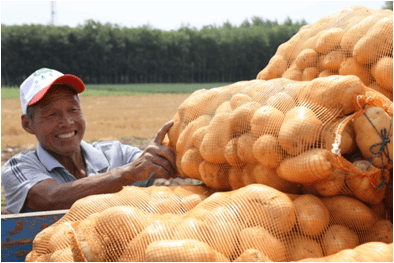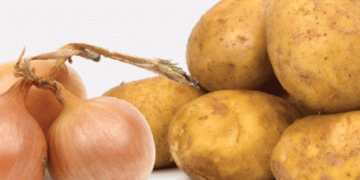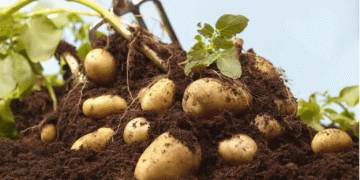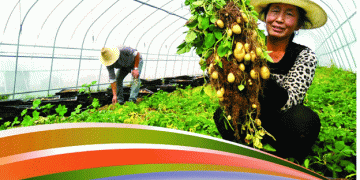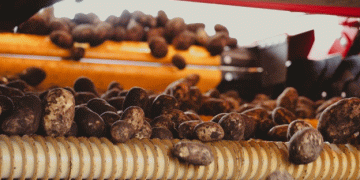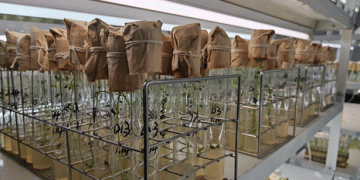Since 1991 (after the collapse of the USSR), China has taken first place in the world in terms of sown area and potato production. In 2012, a record 5.14 million hectares were allocated for cultivation, since then the area has gradually decreased. Since 2020, potatoes occupy about 4.6 million hectares (27% of the world’s cultivated area under crops), the crop exceeds 90 million tons (24% of the global production).
There are four main potato production zones in the country.
Northern monoculture zone (occupies 50% of the total potato growing area). It includes the provinces of Heilongjiang, Jilin, Liaoning and the Autonomous Region of Inner Mongolia. This is where most of the seed potatoes are produced. Landing is carried out in late April – early May, harvesting lasts from September to October.
Southwestern zone of mixed crops (35% of the total potato area). Includes the provinces of Sichuan, Guizhou, Yunnan, part of the provinces of Hunan, Hubei, Chongqing municipality, Tibet region. Potatoes produced in this area are mainly used for fresh consumption. Planting is carried out from September to November, harvesting – from February to April.
Central zone of double planting (10% of the total potato growing area). It includes the provinces of Jiangxi, Jiangsu, Zhejiang, Anhui, Shandong and Henan. The resulting crop is used for fresh consumption and exported. Spring planting is carried out from February to March, harvesting – from May to June. Autumn potatoes are planted in July-August and harvested in October-November.
Winter crop zone (5% of the total area). It includes the provinces of Guangdong, Fujian, Guangxi and Hainan. Potatoes produced in this region are intended for fresh use and for export. Planting is carried out in October – November, harvesting – in February – March.
The provinces of Sichuan, Gansu, Guizhou, Yunnan and the municipality of Inner Mongolia are the leaders in potato production in China, accounting for about 60% of the output.
2022/23 season results
The volume of the fresh potato harvest for the 2022/23 season (September to August) is about 93 million tons, which is slightly lower than last year’s result (95 million tons). The reason for the drop in the collection was the reduction in sown areas in the northern growing zone, some farmers gave priority to soybeans, as the state introduced a number of measures to stimulate the growth of production of this crop.
According to industry sources, the quality of fresh potatoes this season was lower than usual. The problems are caused by weather difficulties: in June 2022, excessive rainfall fell in the northern provinces, and in Northeast China and especially Inner Mongolia, there were fluctuations in day and night temperatures during the growing season.
Based on data from Frozen French Fry Exports Exceed Imports, 2022 (USDA, GAIN)
Рrospects
Scientists predict that China’s food demand will increase by more than 100 million tons per year (CIP, 2020), but shrinking arable land caused by rapid urban growth is not conducive to scaling up China’s grain production (Burney et al., 2010 ; Gu et al., 2019), and potatoes are expected to account for 50% of the increase in food production over the next 20 years (https://cipotato.org/crops/potato/). Increasing potato production will not be easy, however, as China prioritizes grain and oilseeds. Scientists propose to solve the problem by using winter arable land, which remains fallow after harvesting late rice in southern China (about 16 million hectares). At least a quarter of this land can be used for potatoes (Qu et al., 2005).
In official reports on the prospects for the development of potato production in China, it is noted that crop production in the next eight years will increase gradually: areas and yields will grow by an average of 0.5 and 1.3% per year, respectively.
A comment
Dr. Hu Bai Geng, General Manager of Xisen Potato Indastrial Group Company Limited
– The northeastern province of Heilongjiang and the eastern part of the regions of Inner Mongolia are recognized as the most suitable for growing potatoes. These areas are distinguished by fertile soils and optimal climatic conditions.
Potatoes are grown in crop rotation with other crops. Their list usually includes corn, wheat, Chinese cabbage, green onions, etc.
Late blight, black leg, verticillium wilt, bacterial wilt, etc. are considered the most dangerous potato diseases in China. The list of pests that need to be controlled includes soil insects, aphids, etc.
Farmers use small-sized Chinese-made equipment in their work. More than 30% with agricultural producers have planters, 25% harvest potatoes using harvesting equipment; large potato companies use the technique throughout the growing season, for planting, tending and harvesting.
Most farmers sell their products through intermediary companies, and some farmers also sell potatoes in local markets. Farmers do not supply potatoes directly to supermarkets, and only a small portion of the potatoes are specially prepared for sale.
Part of the production after harvesting is laid for storage. In China, there are enough modern storage facilities equipped with ventilation equipment and refrigerators.
Xisen Potato Industry Co. Ltd. is a high-tech agricultural enterprise engaged in potato breeding, production of seed material (including mini-tubers), development and production of food products from potatoes. The company’s headquarters is located in Laoling City, Shandong Province.
The company grows seed potatoes in Inner Mongolia and Northern Hebei on an area of about 26,667 hectares. Annually produces 6,667 ha of virus-free seeds.
A significant amount of potatoes is grown on irrigation; the enterprise has about 800 sets of circular irrigation systems at its disposal. To store products, modern potato storage facilities with a capacity of 450,000 tons are used. The company annually produces 12.5 thousand tons of potato flakes.
